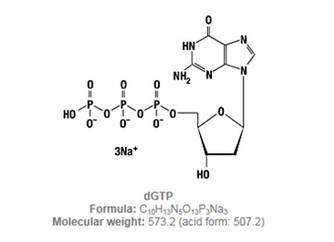Nukleotidy (nucleotides) are the unsung heroes behind all life processes on Earth. Whether you’re studying biology, genetics, or even medicine, the concept of nukleotidy plays a fundamental role. These small but powerful molecules form the basis of DNA and RNA—our genetic blueprint—and are essential in storing and transmitting genetic information from one generation to the next.
Without nukleotidy, life as we know it simply would not exist. They power our cells, support genetic inheritance, and play an active role in cellular processes. Let’s dive into the world of nukleotidy and understand why these tiny structures are so vital.
What Are Nukleotidy Made Of?
Each nukleotid consists of three key parts:
-
A Nitrogenous Base
This can be a purine (adenine or guanine) or a pyrimidine (cytosine, thymine, or uracil). DNA uses adenine (A), guanine (G), cytosine (C), and thymine (T), while RNA swaps thymine for uracil (U). -
A Sugar Molecule
In DNA, the sugar is deoxyribose. In RNA, it’s ribose. This sugar helps distinguish whether a nukleotid belongs to DNA or RNA. -
A Phosphate Group
The phosphate group links one nukleotid to the next, forming a chain or strand. This is how long molecules like DNA and RNA are formed.
Types of Nukleotidy
There are two main categories of nukleotidy:
-
DNA Nukleotidy
These include dATP, dGTP, dCTP, and dTTP. The “d” stands for deoxy, referring to the sugar deoxyribose in DNA. These form the double helix structure of DNA. -
RNA Nukleotidy
These include ATP, GTP, CTP, and UTP. RNA nukleotidy have ribose sugar and are typically single-stranded.
Each type has a specific role, depending on the kind of molecule they form and the process involved.
Functions of Nukleotidy in the Body
Nukleotidy are more than just building blocks—they are active participants in various cellular activities:
1. Genetic Information Storage
DNA, made up of nukleotidy, stores genetic information in the sequence of its bases. This code determines everything from eye color to disease resistance.
2. Protein Synthesis
RNA, also composed of nukleotidy, plays a critical role in translating genetic information into proteins. Messenger RNA (mRNA), transfer RNA (tRNA), and ribosomal RNA (rRNA) work together in this process.
3. Cellular Energy
Adenosine triphosphate (ATP), a type of nukleotid, is the energy currency of the cell. Whenever energy is needed for a chemical reaction, ATP steps in.
4. Signal Transmission
Some nukleotidy function as signaling molecules. For example, cyclic AMP (cAMP) is involved in hormone signaling pathways.
The Role of Nukleotidy in DNA Replication
Before a cell divides, it must copy its DNA. During this process, each strand of the DNA helix acts as a template. New nukleotidy are added one by one, complementary to the existing strand. This ensures that the genetic code is passed on accurately.
Enzymes like DNA polymerase assist in matching and joining the correct nukleotidy to the template strand. Errors can occur, but cells have proofreading mechanisms to correct mistakes.
Nukleotidy and Mutations
While nukleotidy usually pair correctly during replication, mistakes can sometimes happen. A single incorrect nukleotid can cause a mutation—a change in the genetic code. These mutations can be harmless, beneficial, or harmful depending on the situation.
Understanding how nukleotidy work helps scientists study diseases, including cancer, which is often caused by DNA mutations.
Nukleotidy in Modern Science
Nukleotidy have become a focal point in biotechnology, medicine, and genetic research. From DNA fingerprinting in forensic science to mRNA-based vaccines in modern medicine, nukleotidy are at the center of groundbreaking advancements.
They are also used in laboratory techniques like:
-
PCR (Polymerase Chain Reaction)
-
DNA sequencing
-
CRISPR gene editing
These technologies rely on precise manipulation of nukleotidy for diagnostics, treatment, and genetic engineering.
Natural and Synthetic Nukleotidy
While most nukleotidy occur naturally in the body, scientists can also create synthetic ones. These synthetic nukleotidy are used in gene therapy, research, and drug development.
For instance, antiviral drugs often contain synthetic nukleotidy that interfere with viral replication. Some cancer treatments also target DNA by mimicking or altering nukleotidy structures.
Dietary Importance of Nukleotidy
Our bodies can make nukleotidy, but in times of rapid growth or healing (like in infants or after injury), extra nukleotidy from food can be beneficial. Foods rich in nucleic acids—like meat, fish, and legumes—can support this need.
Some baby formulas are enriched with nukleotidy to promote immune and digestive system development.
Conclusion: Why Nukleotidy Matter
Nukleotidy may be microscopic, but their impact is massive. They are essential for life’s most basic processes—storing genetic data, producing energy, supporting growth, and enabling the body to function properly.
As science continues to evolve, nukleotidy will remain at the heart of medical discoveries, genetic therapies, and innovations in biotechnology. Understanding them not only enhances our knowledge of biology but also opens doors to the future of health and medicine.


